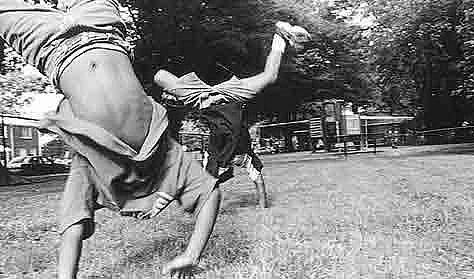Finding My Way Through the Fitness Deserts

Normal.dotm 0 0 2012-04-23T17:31:00Z 1 684 3902 Express 32 7 4791 12.0 0 false 18 pt 18 pt 0 0 false false false /* Style Definitions */ table.MsoNormalTable {mso-style-name:"Table Normal"; mso-tstyle-rowband-size:0; mso-tstyle-colband-size:0; mso-style-noshow:yes; mso-style-parent:""; mso-padding-alt:0in 5.4pt 0in 5.4pt; mso-para-margin:0in; mso-para-margin-bottom:.0001pt; mso-pagination:widow-orphan; font-size:12.0pt; font-family:"Times New Roman"; mso-ascii-font-family:Cambria; mso-ascii-theme-font:minor-latin; mso-hansi-font-family:Cambria; mso-hansi-theme-font:minor-latin;}
I'll admit it: My original idea for the "Fitness Deserts" project was all wrong.
It's not that there aren't neighborhoods in Washington sorely lacking in physical activity options. Or, that residents of these neighborhoods aren't frustrated by this problem. Or, that there aren't community activists dedicating their energies to fixing it.
It's that there are too many of all of those things to bundle into a neat three-part package, particularly in a tabloid-sized paper that doesn't allow stories to jump. (I think I'm pretty good at writing short, but there's just so much you can say in 500 words.)
There was one thing, however, that I'm confident I got right from the beginning. My strategy wasn't to leap directly into writing, but rather to walk and talk. I explored the areas I was considering covering to get a better feel for what they're like. I took formal and informal tours, asked a lot of questions, made contacts. I went to conferences, farmers markets, yoga classes. I conducted countless informational interviews.
My goal was to sound like I knew what I was talking about, and if I hadn't put in this time laying the groundwork, I'm sure I would have failed. Although I've lived in the Washington area most of my life, and been covering health and wellness topics here since 2005, I'd spent virtually no time in or reporting on low-income communities. I could have parachuted in, found a handful of people to interview and been done with it. But my work would have reflected that approach. Instead, I developed a much fuller sense of the causes contributing to inactivity in these neighborhoods and established real connections with several of the people in them.
What that has translated into is a million story ideas and angles. And I realized that the way to tackle this project wasn't as a three-parter or as a five-parter, but as an ongoing, open-ended series.
This approach has allowed me to produce pieces pegged to news and events, and hold onto other topics until I can make them feel particularly timely. As warm weather arrives, for instance, I'm prepared to launch into several stories about outdoor recreational opportunities.
So yes, although for the purposes of the fellowship this blog post is wrapping things up, this series is far from over. I have a long list of stories left to write, and ''m still hoping to create some of the interactive, multi-media features I originally envisioned. (That was another part I got completely wrong: I thought I could pick up the training to be able to put together that stuff myself. It hasn't happened, and I'm still looking for the right partners to help me with it.)
Below are a few other odds and ends I want to mention.
Worst Surprise:
I expect to experience stonewalling in many circumstances. But this wasn't one of them. After all, the city released an Obesity Action Plan in 2010, and the current mayor just rolled out a vision for sustainability that includes cutting the obesity rate by 50 percent. So what's baffled me is how reluctant city officials have been to talk about these issues. For months (and months and months), both the Health Department and Department of Parks and Recreation put me off by setting up dates for interviews and then cancelling them. Once, I was already in the office building! Either they've all been incredibly busy fixing the city's problems, or they don't want me reporting on them. My solution: Go on ahead without them. The numbers speak for themselves. And I've had no trouble getting other health advocates, planning experts and former city officials to open up.
Best Surprise:
My editors at Express have been incredibly supportive of the project. As more stories roll out, we're hoping to put some of them not just on the cover of my section, but on the cover of the entire paper. The series has also been welcomed by my editors at The Washington Post. The Local Living section has made a commitment to reprint as many of the stories as possible. (Three of my stories have already run in both publications.) The papers reach different audiences, so it's been wonderful to get double the feedback from readers - and interviewees.
Time Management:
Scheduling has been the biggest challenge of taking on this project. Express is a paper with not many folks on staff, but a lot of deadlines. And there's no way to make my regular work go away, and no one else to do it for me. One reason I've only managed to publish five stories in the series so far is that it's had to take a backseat to other projects that have come up at work that have required all hands on deck. Now that those seem to be wrapping up, I'm hoping I can devote all of my extra time (whatever of it there is!) to making more progress on the series.
